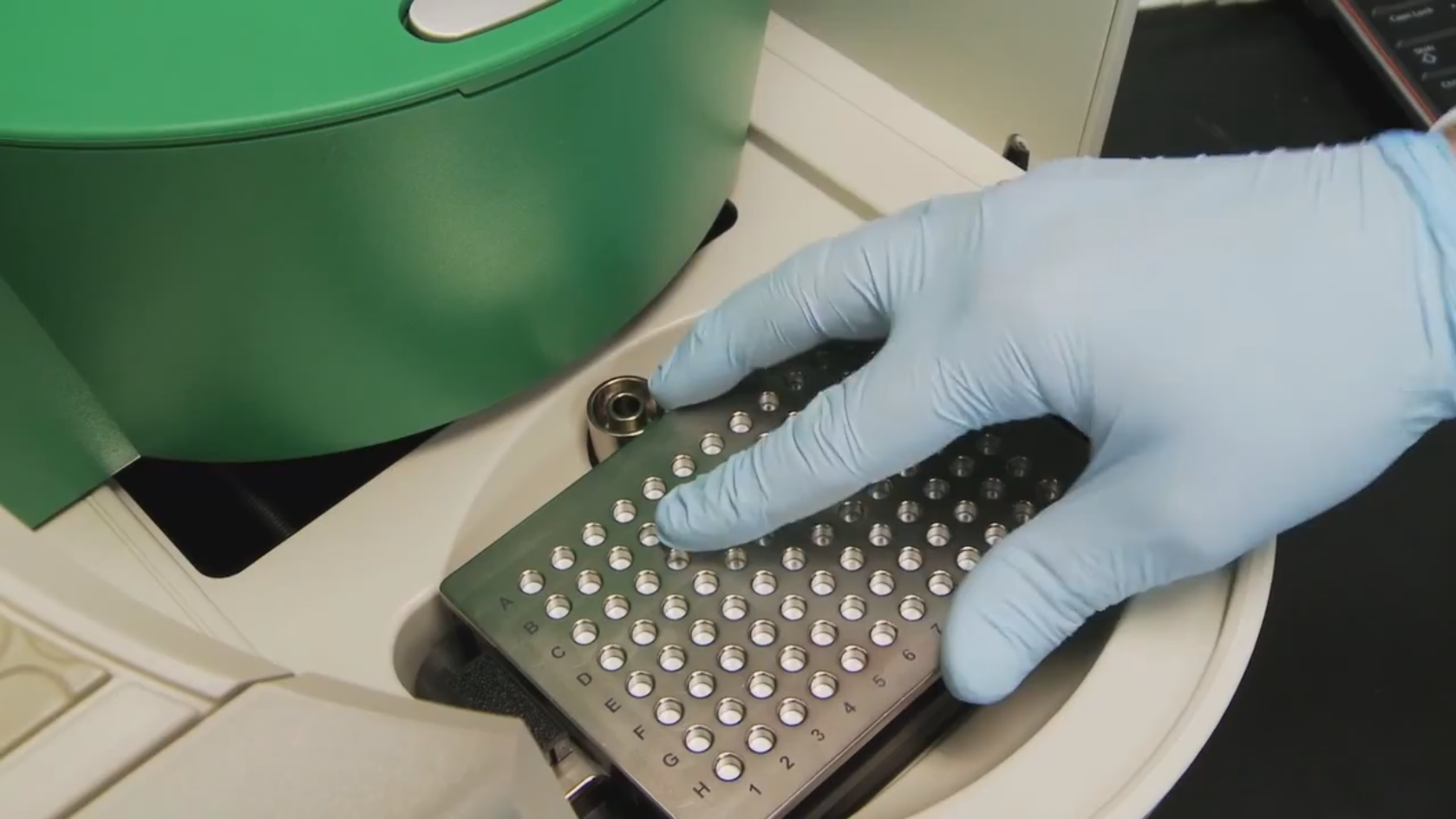ddPCR Vs. RT-qPCR - The Results Are In!

Want to listen to this article for FREE?
Complete the form below to unlock access to ALL audio articles.
Read time: 4 minutes
A recently published paper in the Journal of Virological Methods is the first to directly compare ddPCR technology to RT-qPCR with multiplexed assays using the same reaction mix and cycling protocol such that all variables are held constant except the platform (real-time PCR or digital PCR). The study found that Bio-Rad’s Droplet Digital PCR (ddPCR™) technology identifies viral RNA mutations in clinical samples with greater precision, sensitivity, and reproducibility than quantitative reverse-transcription PCR (RT-qPCR),
To discuss the significance of this work we spoke with Sean Taylor, application scientist at Bio-Rad and the paper's lead author.

Sean: The major benefits of Droplet Digital PCR (ddPCR) include:
1) Elimination of Cq values and therefore the requirement for efficient (between 90 percent and 110 percent according to the MIQE guidelines) PCR reactions. Therefore, the deleterious effect of sample contaminants on the efficiency of Taq polymerase, the resulting Cq values and qPCR data are greatly reduced with Droplet Digital PCR permitting the generation of high quality data from suboptimal samples. For qPCR, "the solution is dilution" of samples within the linear, quantitative dynamic range of the primer validation standard curve. However, for low expressed targets, micro RNA and precious samples from which very low amounts of DNA are extracted, dilution is not a realistic option, and ddPCR technology is the logical choice to reduce data variability from contaminants.
2) Absolute quantification. Standard curves are not required for ddPCR technology to quantify the amount of DNA/RNA in samples whereas for qPCR they are not only needed but also a major source of error for labs attempting absolute quantification with this technique.
3) Sample independent analysis and data processing. Droplet Digital PCR gives meaningful, reproducible and quantitative data from each sample, dramatically reducing intra- and inter-assay variability as we demonstrated in our article. However, for qPCR there is an interdependence of Cq values between samples (to generate Cq’s) or standard curves which necessitates data analysis for each target from a single plate for all samples. Interplate variability could eliminate the statistical significance of qPCR data especially in cases where small differences are measured between samples.
Furthermore, for dynamic studies requiring sample collection at various time points, ddPCR technology permits the immediate processing of individual samples as they become available without compromising the data or conclusions. This can be particularly important for plant, animal, patient or environmental studies that require study collection over months or years where initial data may help in redirecting the experimental design. Also, since clinical diagnostics are often dynamic and require data from successive samples to make measured decisions to alter treatment options, the sample independence of ddPCR technology offers an excellent solution as it did for the viral samples tested in our paper.
4) Increased sensitivity for mutation abundance assays. Detecting a DNA biomarker from a tumor or an infectious disease in a background of normal/wild type sequence is challenging with qPCR because the rare biomarker is masked by the high levels of background sequence giving false negative data below about 10 percent abundance. This would be analogous to finding a needle in the proverbial haystack. Since ddPCR technology segregates a given sample into about 20,000 partitions, like creating thousands of small haystacks in which the needle is much more easily found, much of the background sequence will be filtered from the biomarker. This permits partition-specific amplification and detection to a level of about 0.02 percent in a single well.

Why are these benefits potentially significant for the management of drug resistant Influenza strains?
Sean:
In case of drug-resistant Influenza strains, all these benefits become significant because the abundance of the different viral strains must be monitored from very high to very low levels with a high level of precision, reproducibility and confidence. By eliminating Cq values and reducing the efficiency dependency, more sample with more background contaminants can be tested with Droplet Digital PCR to give higher signal to noise when assessing residual infection post treatment to more accurately assess patient recovery.
Absolute concentration data without the requirement for a standard curve assures reliable results from each successive sample taken over the course of infection to make reliable treatment decisions. For qPCR, this would require running a standard curve on separate plates with each collected sample which not only adds significant operating cost but can lead to large inter-assay variability, inaccurate data and poor treatment decisions.
Since this study not only required quantification of viral load but also the specific abundance of the mutated (H275Y) versus the wild type virus, the unique capacity of ddPCR technology to partition the wild type virus from the mutant strain gave more precise and sensitive detection of residual virus. This enabled the appropriate selection of antiviral therapy throughout infection to eliminate disease.
What other applications could ddPCR systems be useful for within the field of virology?
Sean:
In addition to being well suited for monitoring residual infections, Droplet Digital PCR is gaining traction in the virology market as a method for quality control for gene therapeutic products. Last year in Human Gene Therapy Methods, Boehme et al. demonstrated Droplet Digital PCR's advantages as such a tool and concluded that ddPCR technology could be advantageous for titration of viral vectors commonly used in gene therapy.
Droplet Digital PCR is also useful in the evaluation of commercially available qPCR standards. Last year in the Journal of Clinical Microbiology, for example, Hayden et al. used ddPCR technology to test several commercially produced secondary standards based on the first WHO International Standard for human cytomegalovirus (CMV), which are aimed to improve agreement among labs performing quantitative CMV PCR. The use of digital PCR as a reference method demonstrated the lack of quantitative agreement among different secondary standards on the market. Due to the challenging nature of quantitative standard production, several manufacturers of such standards have adopted Droplet Digital PCR to aid in better standards development.
Have you seen increased interest in ddPCR technology for virology diagnostics since the publication of your research?
Sean:
There has been a steadily increasing interest in Droplet Digital PCR in the field of virology. Viral load measurements have become routine standard-of-care for many patients, particularly those with compromised immune systems. The sample-independent analysis and data processing offered by ddPCR technology offers an excellent solution to many patient-centric treatment options and assessment of patient recovery.

Sean Taylor was speaking to Jack Rudd, Editor at Technology Networks

